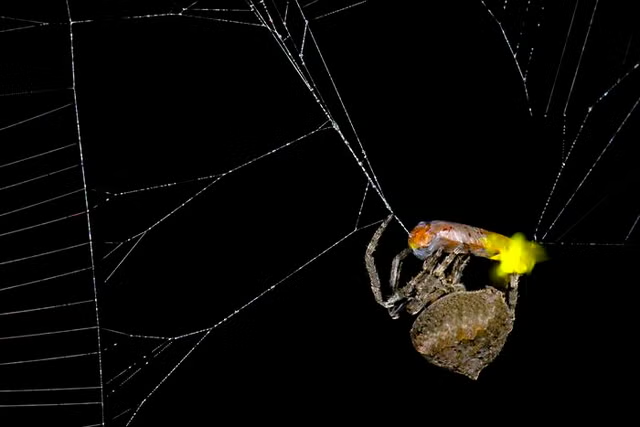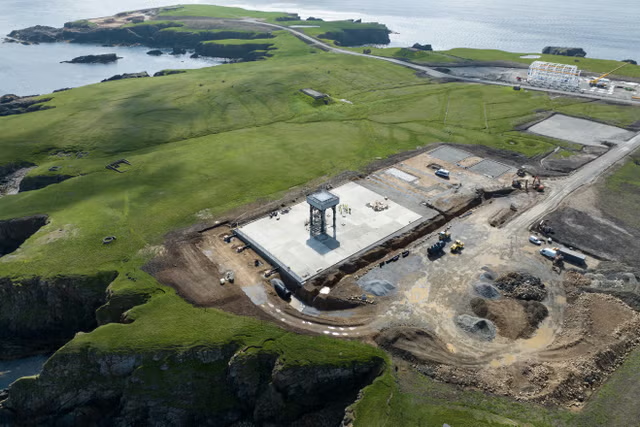As Lake Powell's water levels have dropped over decades of drought, the Glen Canyon is filling with verdant vegetation.
Many areas of the canyon that have been submerged by the reservoir for decades have reemerged, and are now a hub of plant and animal life.
Now, researchers have suggested that the canyon be kept dry to allow the newly reformed ecosystem to thrive, while others insist it should be filled to maintain its water supply to the southwestern U.S.
Lake Powell is a human-made reservoir located on the Colorado River, straddling the border between Utah and Arizona. It was created by the construction of the Glen Canyon Dam in the 1960s, primarily as a means of water storage, hydroelectric power generation, and recreation. Glen Canyon is the name of the canyon that was largely submerged by Lake Powell when the dam was built.
Lake Powell's water levels have dropped significantly in recent years, primarily due to a "megadrought" that has plagued the Colorado River basin for over 20 years, and has drastically reduced flows into Lake Powell.
"This megadrought, or prolonged period of dryness, has lasted some two decades now in the Southwest, leading to a real decline in our two major reservoirs in the basin—Lake Mead and Lake Powell," Andrea K. Gerlak, a geography professor at the University of Arizona, previously told Newsweek.
"Both reservoirs are experiencing record-setting lows leading to concerns that there won't be enough water for all of the cities, farmers, tribes, and businesses that have been promised water and have built an economy around Colorado River water."
As of August 19, Lake Powell was at 3,581.96 feet above sea level. Lake Powell has a full pool level of 3,700 feet, and is currently about 38.8 percent full. It has a dead pool level of 3,370 feet, below which water can no longer run through the dam or provide hydroelectric power.
"There are 40 million people who rely on the Colorado River, and if there's no water coming through Hoover Dam that affects the water supply for 40 million people. And we're talking about the Great Western cities, southwestern cities. We're talking about farmers and we're talking about tribes," Robert Glennon, a water policy and law expert and an emeritus professor at the University of Arizona, previously told Newsweek.
However, the declining waters seemingly aren't all bad news: As the reservoir has dropped over the decades, the falling water levels have exposed large swathes of previously submerged land, including parts of the original Glen Canyon. This has allowed a strange desert oasis to form, filled with native plant life.
"Nature has given us a second chance to reevaluate how we're going to manage this place," Seth Arens, a scientist with Western Water Assessment and the Cooperative Institute for Research in Environmental Sciences, at the University of Colorado Boulder, told local news KUNC.
"It turns out nature is doing a pretty good job by itself," Arens said, "Of coming back and establishing thriving ecosystems."
The native plants have attracted a huge variety of birds, lizards, mammals, amphibians and insects. Researchers and activists have said that this is reason enough to keep the water levels of the reservoir as low as they are now, or even drain it altogether and store the water elsewhere.
"If the old assumption was that we can store water in Glen Canyon because there's nothing there, that assumption is wrong," Eric Balken, director of the nonprofit Glen Canyon Institute, told KUNC. "There is a lot here. There is a serious ecological consequence to putting water in this reservoir, and we cannot ignore that anymore."
In a 2023 report, the U.S. Bureau of Reclamation described Glen Canyon as being overrun with invasive plants as water levels drop, stating that "any additional acreage of exposed shoreline around Lake Powell has the potential to be invaded by invasive plant species such as tamarisk and Russian thistle," as reported by KUNC.
"When I read that, I just thought, 'Had these people even been to Glen Canyon?'" This place is a vibrant, burgeoning ecosystem," Balken said.
A USBR spokeswoman told KUNC that "Reclamation's consideration of impacts to vegetation are primarily for resources downstream of Glen Canyon Dam that are affected by dam releases," with annual snowmelt likely having more of an impact on water levels than water releases by the USBR.
"Most of the releases, even on the annual time scale, have negligible effects on lake levels and vegetation," she said.
Do you have a tip on a science story that Newsweek should be covering? Do you have a question about the Glen Canyon? Let us know via science@newsweek.com.
Disclaimer: The copyright of this article belongs to the original author. Reposting this article is solely for the purpose of information dissemination and does not constitute any investment advice. If there is any infringement, please contact us immediately. We will make corrections or deletions as necessary. Thank you.



